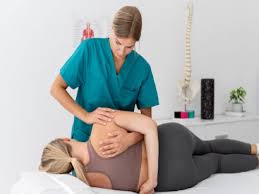
CERTIFICATE IN ACUPUNCTURE THERAPY (1 YEAR)
🎓 Certificate in Acupuncture Therapy (1 Year)
📘 1. Introduction to Acupuncture
- Definition, scope, and benefits of acupuncture
- History and origin (China, India, WHO recognition)
- Basic difference between acupuncture and acupressure
- Role of acupuncture in modern healthcare systems
🧠 2. Basics of Human Anatomy & Physiology
- Introduction to:
- Skeletal system
- Nervous system
- Circulatory system
- Digestive system
- Respiratory system
- Functions of major organs
- Importance of anatomical knowledge in acupuncture
🌐 3. Principles of Traditional Chinese Medicine (TCM)
- Yin-Yang theory
- Five elements theory (Wood, Fire, Earth, Metal, Water)
- Concept of Qi (vital energy), Xue (blood), and Jing (essence)
- Zang-Fu organ theory (Lung, Heart, Liver, etc.)
📍 4. Introduction to Meridians and Energy Channels
- Overview of 12 primary meridians
- Introduction to 2 extra meridians (Conception & Governing Vessels)
- Flow of Qi and meridian clock (organ timing)
- Direction of energy flow and its relevance
🖐️ 5. Acupuncture Points (Acupoints)
- Classification of acupuncture points
- Cun measurement system (proportional body measurements)
- Location and function of 40+ commonly used points (e.g., LI4, ST36, SP6)
- Special point categories (Yuan-source, Luo-connecting, Mu, Shu points)
💉 6. Needling Techniques & Safety
- Types of acupuncture needles
- Sterilization, hygiene, and safety practices
- Methods of needle insertion (angle, depth, retention)
- Contraindications and emergency management (e.g., fainting, needle shock)
🔍 7. Basic TCM Diagnosis
- Introduction to diagnostic methods:
- Observation (tongue)
- Palpation (pulse)
- Inquiry (symptoms, lifestyle)
- Basic syndrome differentiation (Excess/Deficiency, Cold/Heat)
⚕️ 8. Common Disorders Treated with Acupuncture
- Headaches, migraines
- Back and joint pain
- Indigestion, constipation
- Insomnia and fatigue
- Stress, anxiety, and emotional imbalances
- Respiratory issues (allergies, asthma – supportive care)
🧾 9. Practical Training & Case Studies
- Hands-on needling practice (on models or volunteers)
- Observation and demonstration of clinical cases
- Record-keeping and reporting
- Minimum of 10–15 documented treatment sessions


